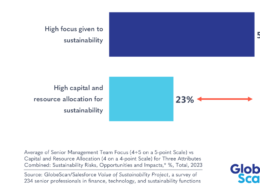A report released by the CFA Institute Research and Policy Center aims to enhance ESG fund classification by thoroughly reviewing existing frameworks and defining key fund-level features with precision. The report also provides examples of rigorous definitions practice.
The report, titled ‘How to Build a Better ESG Fund Classification System’, evaluates various ESG fund classification frameworks from the United States, European Union, and the United Kingdom, identifying issues such as vague definitions, imprecise criteria, and flawed logical structures that hinder effective classification.
This report is designed to assist regulators in developing and refining rules for ESG funds and to help industry participants in both marketing and selecting these funds. It provides guidelines, examples, and case studies to navigate the complexities of ESG fund classification.
Chris Fidler, Head of Global Industry Standards, CFA Institute said, “There is much disagreement about how to categorically define and identify ‘ESG funds.’ And when ambiguous terms like these are used in regulation to create special rules for certain kinds of funds, it can create significant uncertainty in the marketplace. This paper shows how to build strong fund category definitions, and we hope it ultimately leads to clearer regulation which would benefit both fund investors and fund managers.”
He added, “The ultimate test of a classification system is to have different evaluators classify the same set of funds. If they do it the same way, a good system exists. If different evaluators assign the same fund to different groups, revisions are required.”
The paper defines three observable features for classifying ESG funds. The first feature is the presence of processes that integrate ESG information to enhance risk-adjusted returns. The second is policies that manage fund investors’ exposure to and impact on specific systemic ESG issues, and the third is an explicit intention, action plan, and progress measurement to achieve targeted environmental or social outcomes.
Fidler said, “The SEC can learn from the EU’s mistakes. I’m concerned that the Enhanced Disclosures Rule has the same sort of ambiguous definitions that SFDR has and that, if passed as proposed, the US market will experience the same sort of disruption that the EU market experienced with regard to fund classifications. The SEC should either eliminate the definitions and requirements that are likely to result in a de facto fund classification system, or alternatively, intentionally define minimum standards for funds that are marketed as sustainable.”






















